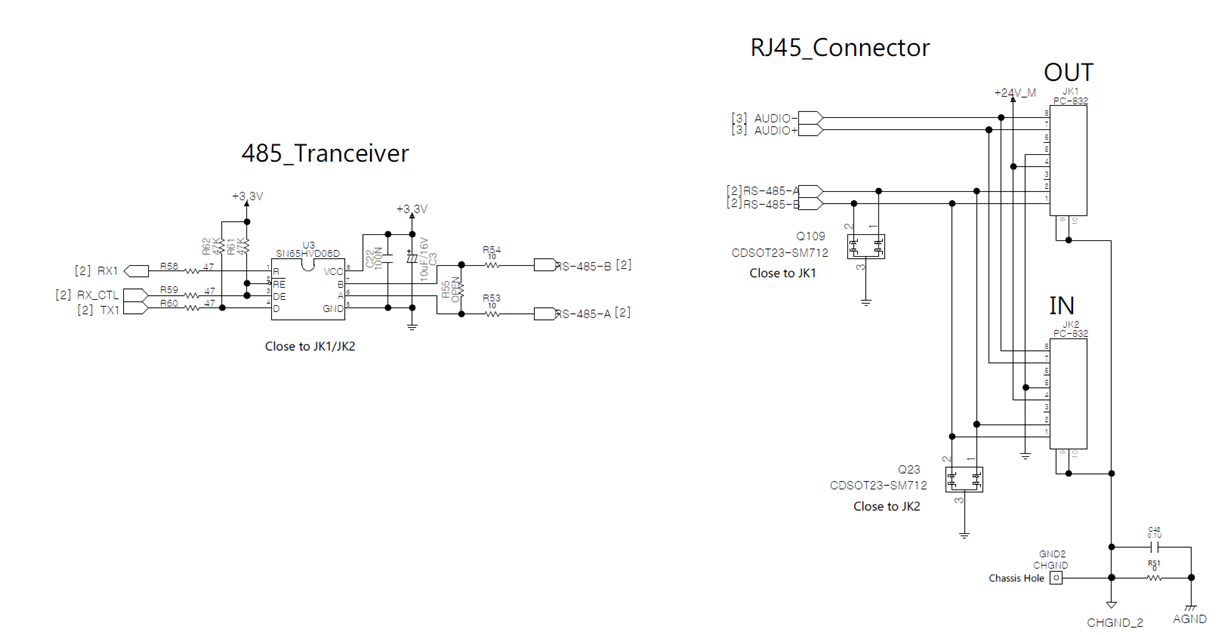Other Parts Discussed in Thread: THVD1429, THVD1450, , STRIKE
Dear TI and all,
Above circuit is part of connecting audio device.
JK1, JK2 is RJ45 JACK(refer to attached a file PCB-832(RJ45 Jack).pdf.)
This jack is used to connect audio devices.(For DC power , 485 comm. and audio signal)
I have a question below this.
To suppress ESD of Power and signals, I added Q109, Q23.
There circuit need to add another parts improve ESD or another electrical characterisctics?
Please, review that circuits.
Best Regards,
Inho Jeon
PS.
I don't understand that body of RJ45 Jack connected chassis ground and analog ground(refer above circuits). Is it right way?
I think that way is improved ESD, EMC. Is that right?
Please, inform me solution of my questions.


